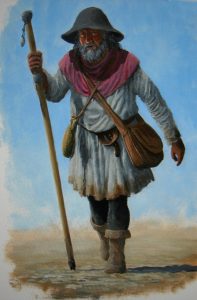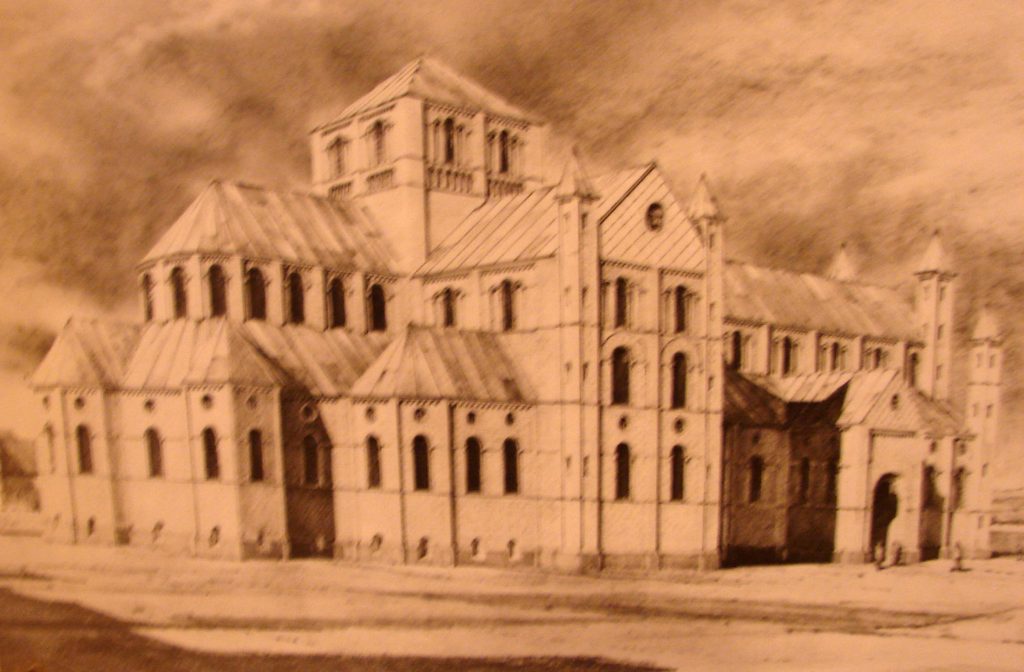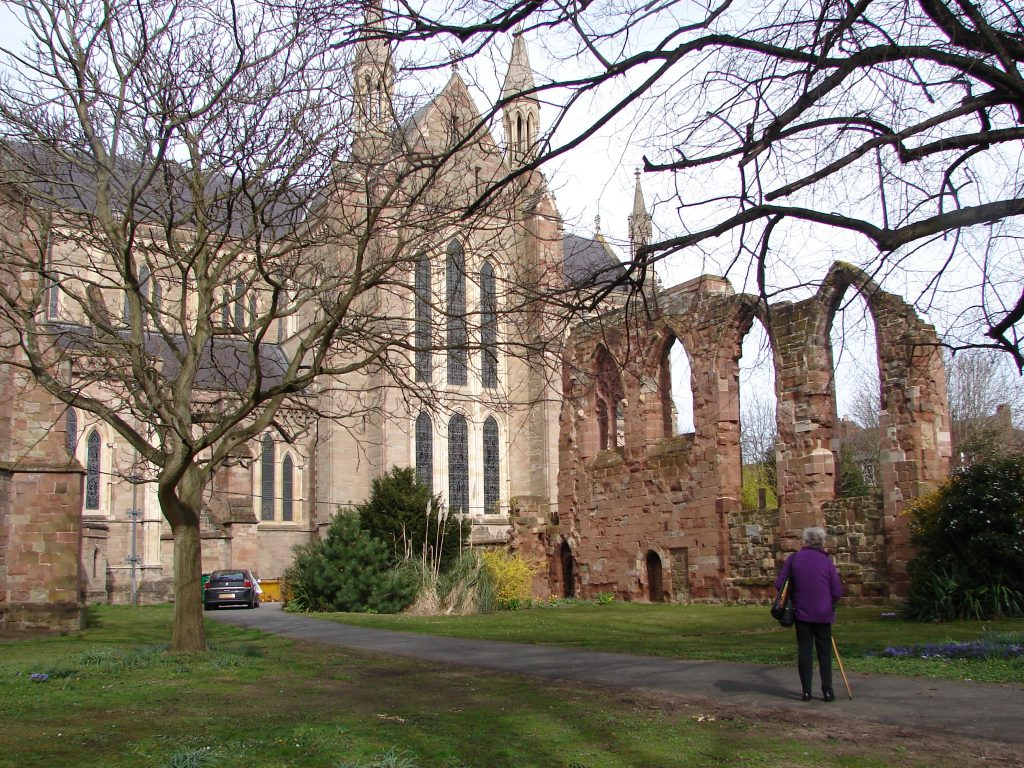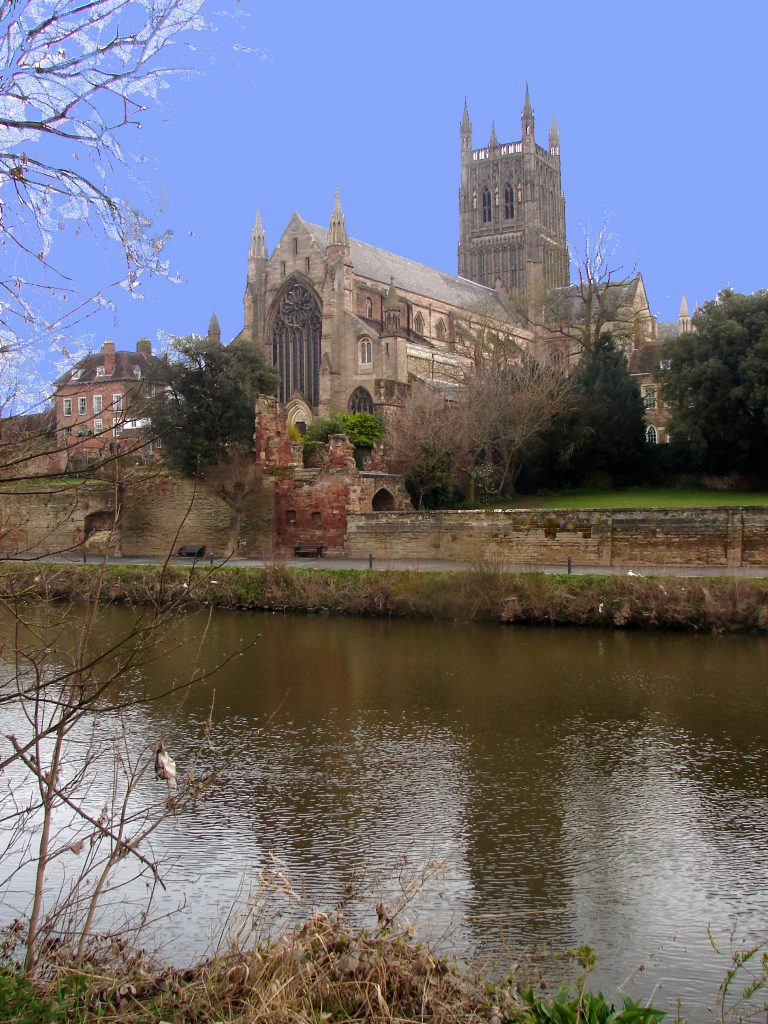Greetings! Today, we continue to examine some of the topics which arise in King Richard’s Sword, the sixth book in my Lady Apollonia West Country Mystery series. We are currently discussing the ancient city of Worcester, the setting for the novel. This posting will continue the medieval history of Worcester by focusing on Worcester Cathedral.
I mentioned in my posting of August 23, 2021, that Worcester Cathedral has a history going back to AD 680. That is 1341 years ago, over a millennium and a third. Those of us who are Americans find such longevity amazing and can hardly imagine an organization existing and thriving for such a period. It is true that there are no longer any remnants of the first cathedral building in Worcester, but the cathedra, that is, the throne of the Bishop of Worcester, has been at this same site throughout these many centuries.
In my earlier postings about Worcester, I mentioned that two Saxon bishops, Oswald and Wulfstan, later became saints after each contributed to the development of the cathedral. Oswald, in the late 10th century, brought the running of the cathedral under a single monastic order, the Benedictines. Thus, Worcester Priory and Worcester Cathedral became linked together before the end of the first millennium, a situation that continued up to and beyond the time of my novel at the end of the 14th century. Wulfstan started a new church building, a model of which is shown above at the start of this post. The crypt of that 11th century church does survive under today’s mostly Gothic church building.
 King John of Magna Carta fame took a special interest in Worcester. On his deathbed, he added a codicil to his will stipulating that he wished to be buried in Worcester Cathedral. His death occurred in AD 1216 and his wishes were honored, so his tomb, as pictured above, sits today in front of the high altar of Worcester Cathedral.
King John of Magna Carta fame took a special interest in Worcester. On his deathbed, he added a codicil to his will stipulating that he wished to be buried in Worcester Cathedral. His death occurred in AD 1216 and his wishes were honored, so his tomb, as pictured above, sits today in front of the high altar of Worcester Cathedral.
The present building, called the Cathedral Church of Christ and the Blessed Mary the Virgin, of Worcester, was constructed between AD 1084 (the crypt) and 1504 and represents architectural styles from Norman to Early English Gothic right through to Perpendicular Gothic. In the picture to the left, I am sitting in the nave taking in the splendid Gothic interior as it would have appeared at the time of King Richard’s Sword.
The medieval version of the church was much as we see it today, but it did feature a separate tower called the Clochium on the north side of the church. The Clochium was a massive, octagonal stone structure with a spire on top, probably used to toll the hours of the Opus Dei before the central tower of the Gothic structure was built. The drawing of the medieval cathedral and priory above shows how the Clochium was higher than any other feature of the medieval buildings. Early in my novel, when the Lady Apollonia visited the priory, she had to walk past the Clochium to enter the cathedral through the north door.
 In 1987, the remains of a medieval pilgrim were found in Worcester Cathedral. Objects found with his remains indicated that he had traveled to Santiago de Compostela in Spain and made other pilgrimages as well. He had been wounded on his journeys, but the quality of his clothes indicated that he was comparatively wealthy, although probably not a knight or nobleman. A drawing of the so-called Worcester Pilgrim is shown on the left. The pilgrim inspired one of my characters in King Richard’s Sword, a wealthy merchant named Robert Kenwood.
In 1987, the remains of a medieval pilgrim were found in Worcester Cathedral. Objects found with his remains indicated that he had traveled to Santiago de Compostela in Spain and made other pilgrimages as well. He had been wounded on his journeys, but the quality of his clothes indicated that he was comparatively wealthy, although probably not a knight or nobleman. A drawing of the so-called Worcester Pilgrim is shown on the left. The pilgrim inspired one of my characters in King Richard’s Sword, a wealthy merchant named Robert Kenwood.
This next picture shows me examining some ruins next to the eastern south transept off the Choir of Worcester Cathedral. This was once the east wall of the Guesten Hall in Worcester Priory where visitors were lodged under the care of the priory’s Hospitaller. In my novel, I chose it as a place for Brandon Landow, the pardoner, to stay when he was trying to sell a fake relic to the monks of Worcester Priory.
Please join us next time when I will tell of some of the characteristics of King Richard II whose loss of his crown by usurpation occurred at the time of my story. For now, however, I leave you with a picture below of the glorious Worcester Cathedral as it appears from across the River Severn.




